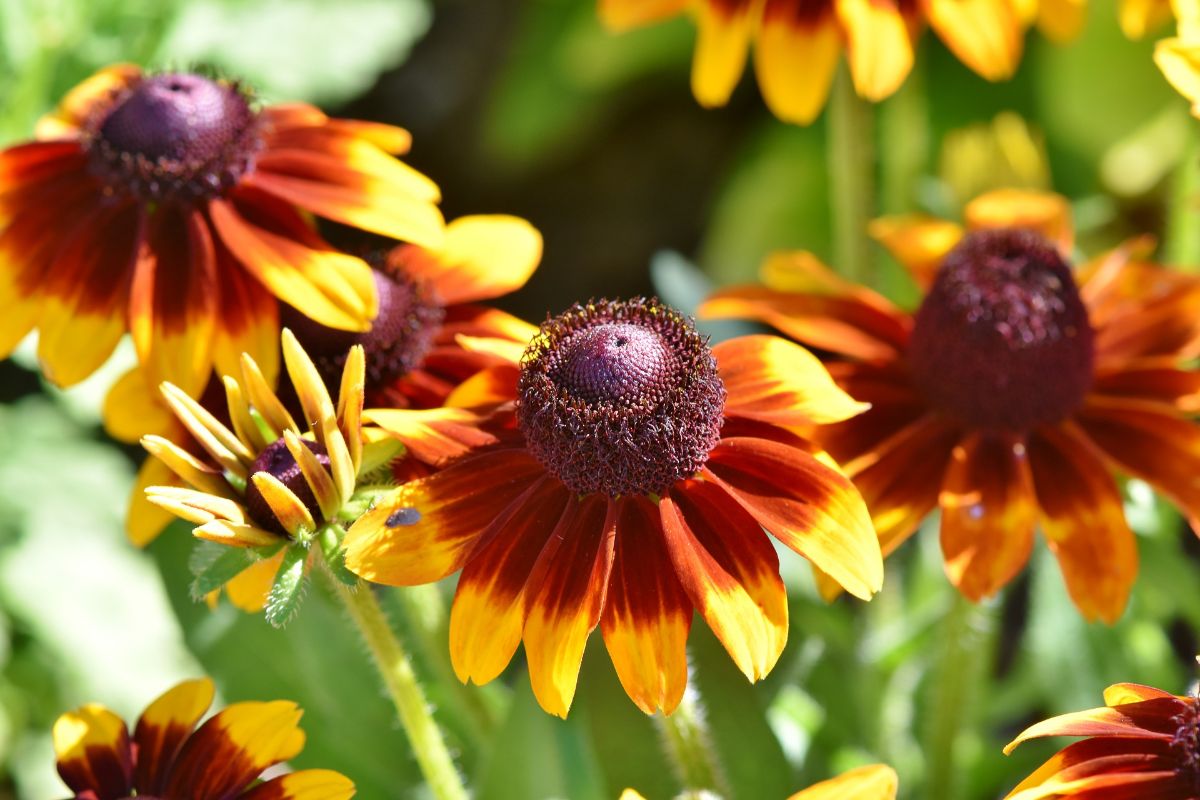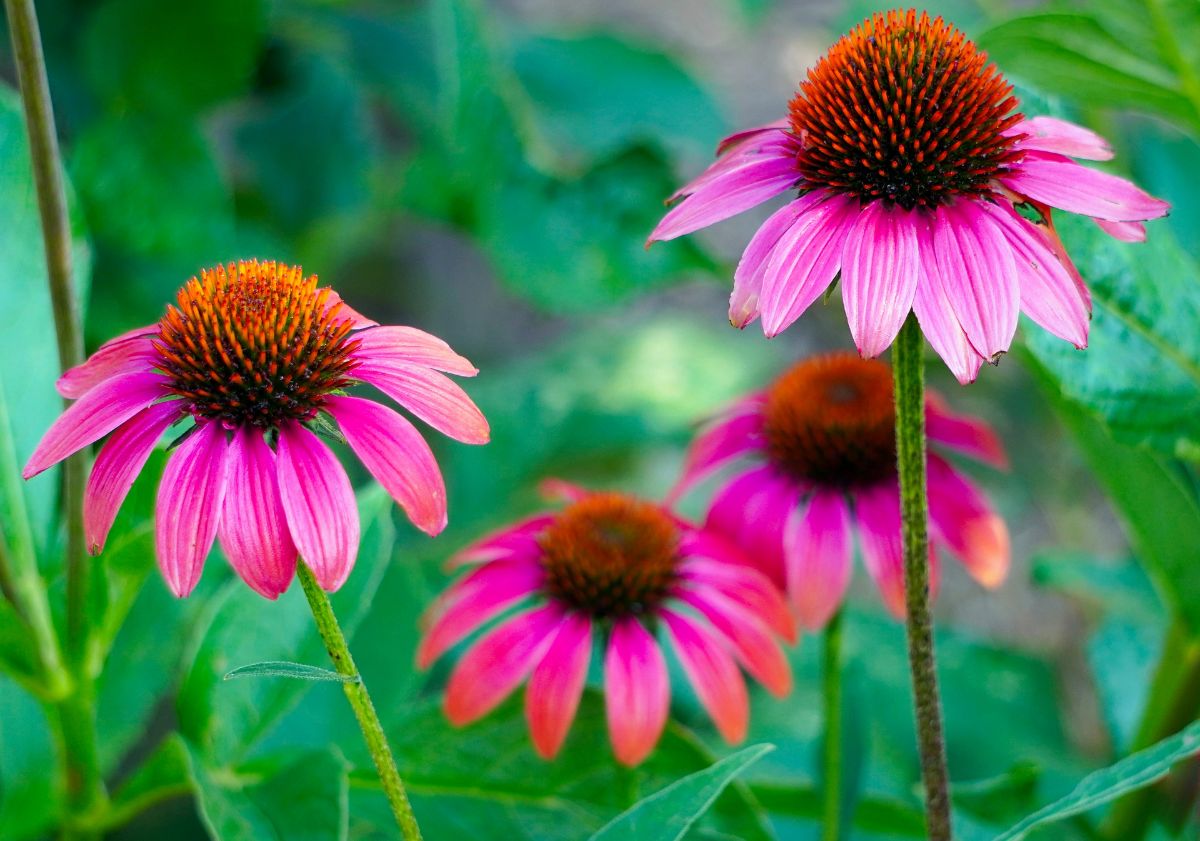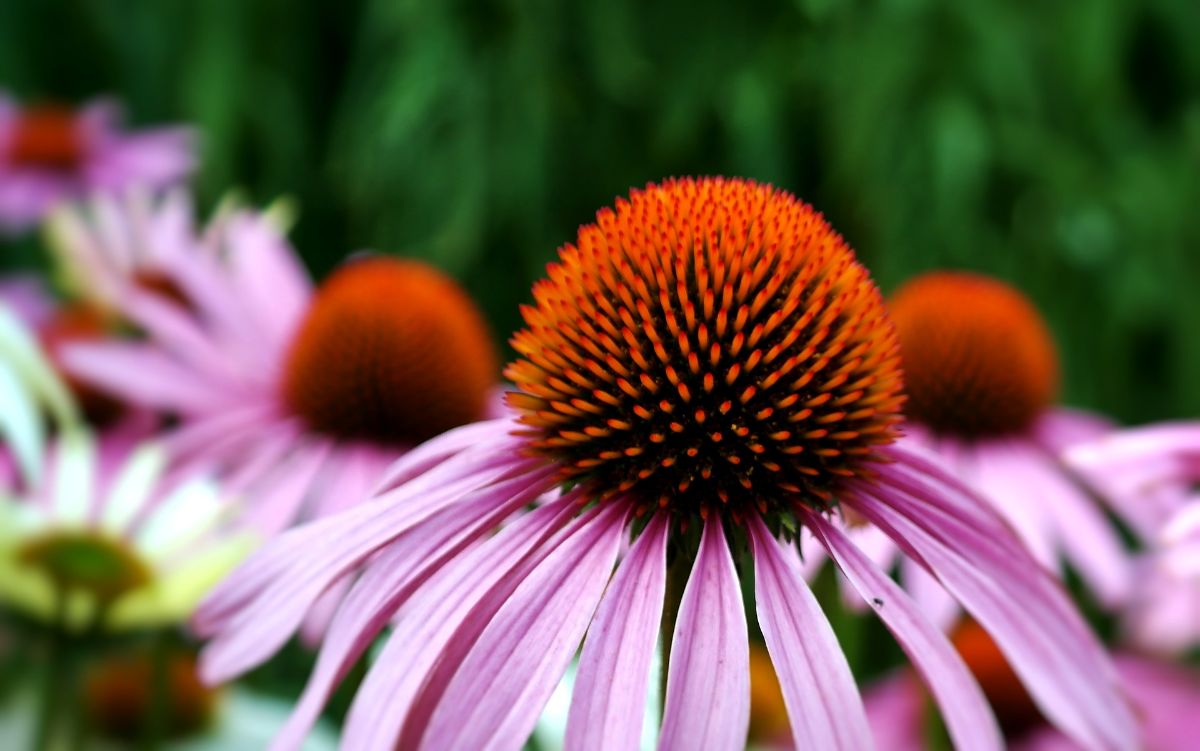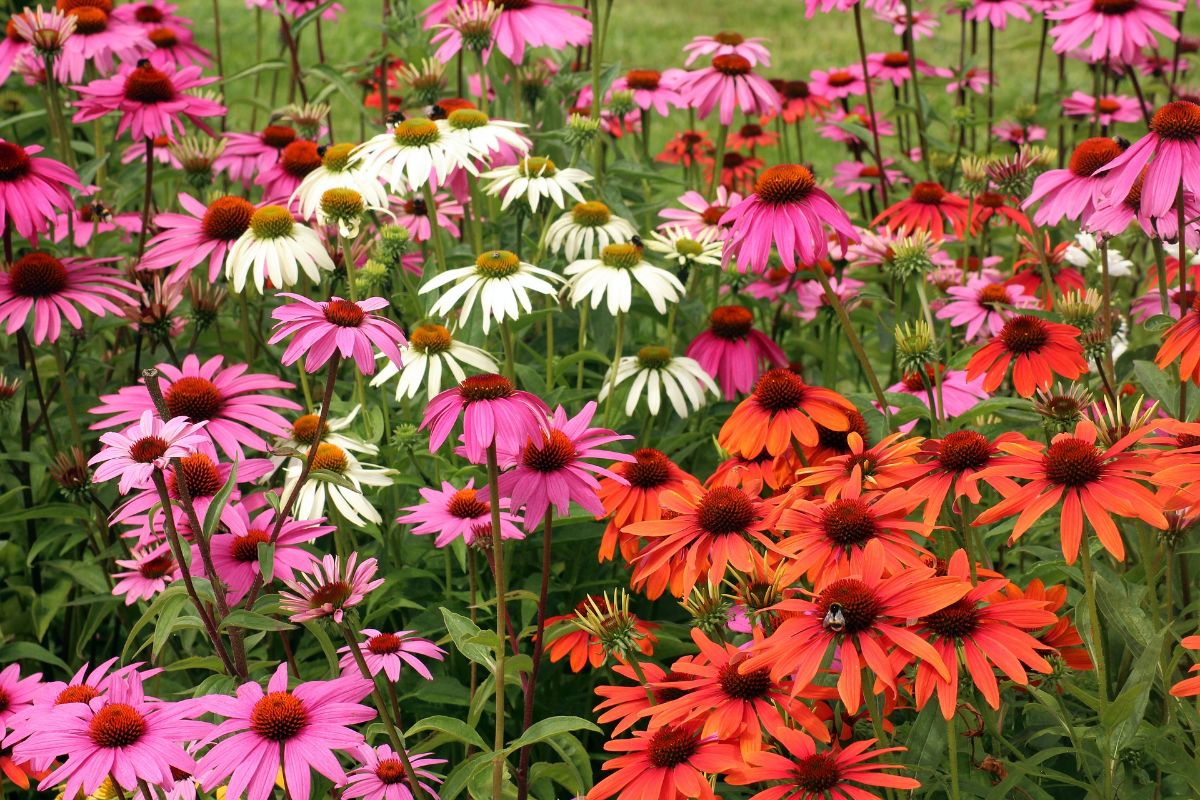
Echinacea is a plant very similar to the daisies. It is also called the conical flower of the prairie and belongs to the family of the Asteraceae. Due to the medicinal properties and the beauty of its flowers, it is one of the most appreciated in gardens. But, How to grow echinacea?
If you want to have it in your garden or in a pot, it is important to know what the needs of the plant are so that it lasts a long time. Do you want to know what they are?
Echinacea characteristics

Echinacea is a perennial plant, that is, it lasts all year round. He is able to reach more than a meter in height and it has very large petiolate leaves, dark green in color and sometimes also with thorns, especially on the stem. But what stands out the most about this plant are, without a doubt, its flowers.
All the Echinacea flowers are large and very similar to daisies. The ligules (petals) are very long and can be of different colors, although usually white, red, pink and purple echinaceas predominate. While they have a large floral disk, but you have to be careful with it because, in some species, it has thorns.
La most varieties of echinacea are native to the United States, but the truth is that they grow almost wild. Whenever they find a suitable climate and soil, it takes root strongly, and due to its medicinal use, as well as as an ornamental plant, more and more people are choosing to cultivate it.
How to grow echinacea step by step

After knowing a little more about echinacea, we are going to give you the key points so that you can grow it in your garden or in a pot. It is quite easy to do, and requires little care under the perfect conditions.
Location and weather
We start with the best place to grow echinacea. In this case, This plant prefers full sun to shade. If you do too much, then a semi-shadow is better. But the important thing is that there is at least 5-6 hours of direct sunlight towards the plant so that it can be well nourished.
Although it tolerates high temperatures, this is not the case with low temperatures. Yes it can withstand the cold, but not the frost.
Earth
The soil that needs an echinacea has to be light and clayey, that it is not caked and, above all, that it is well drained.
If you are going to plant it in the garden, before doing so it is recommended to plow the area to be able to oxygenate and loosen the soil, especially if it is very compact because, if so, it is very difficult for the plant to get ahead.
In the case of a pot, it can be planted with less trouble, but It is not advisable to crush the earth, just leave it as it is to oxygenate and can root the plant.
Irrigation
Echinacea is not a plant that needs constant watering, because it tolerates drought well. But that doesn't mean that you don't want water either. In fact, likes to live in a somewhat humid environment, since it favors a greater growth.
However, it does not tolerate excessive watering because it would rot its roots. Therefore, it is better to water in a small quantity even if you have to do it more times a week.
Plagues and diseases
There are two important problems to prevent and treat if they occur: on the one hand, slugs, who have a predilection for this plant and that can do it a lot of damage.
On the other hand, there would be mushrooms, especially those of root rot that occurs, as we have commented before, by an excess of watering.
In general, this is the most common thing that affects echinaceae.
Multiplication

Multiplication is carried out in two different ways: by seeds or by cuttings.
How to plant echinacea seeds
If you buy echinacea seeds (you can do it in garden stores, nurseries, etc.) the first thing you should do is prepare a seedbed or a small pot to plant. You have to do it in the months of March or April, which is when you are going to have the most possibilities.
Make sure that the soil is not compacted, nor if you compact it, it must be loose both when you put the base and when you place the seed and cover it with soil. Yes indeed, You should plant it about twice the diameter of the seed. However, measuring it is almost impossible, so it is usually placed practically at the base of the pot and sprinkled with a handful of soil as if it were a little salt on top.
In about 15 days it should germinate if you keep it at a constant temperature of 25 degrees.
That first spring and summer should be in a greenhouse, or at least protected from inclement weather. In the spring of the second year, you can transplant it to its final place.
How to plant echinacea cuttings
Another way to grow echinacea is through cuttings, which are nothing more than divisions that are made of the plant (it occurs in the autumn or spring months).
For that, the best time is autumn, because that is when the plant is dormant and undergoes division the least. Before doing so, it is important that you water the mother plant the night before so that the roots are hydrated and the soil soft.
In the morning, you can divide the plant into several cuttings, which you will have to plant in a mixture of coarse sand with peat. It must be draining so that water does not accumulate on the ground. When planting them, it must be done at a sufficient depth, covering with the earth and placing it in semi-shade at first.
And is that the The first few days you should not give it the sun because it has to get used to its new state. It is not necessary to water often, it is better that the soil dries between waterings so that fungi do not appear.
In about 2-3 weeks the cutting should have rooted well and that would be the time when you should start to get the sun. Of course, little by little until it is already in full sun.
After a few months the plant will behave the same as where we got it from, so you will have flowers again (for summer) and it will be able to grow quickly for, perhaps not that year, but the next one will serve to have more echinaceae.
Do you have questions about how to grow echinacea? Then ask us and we will try to help you make everything go smoothly.